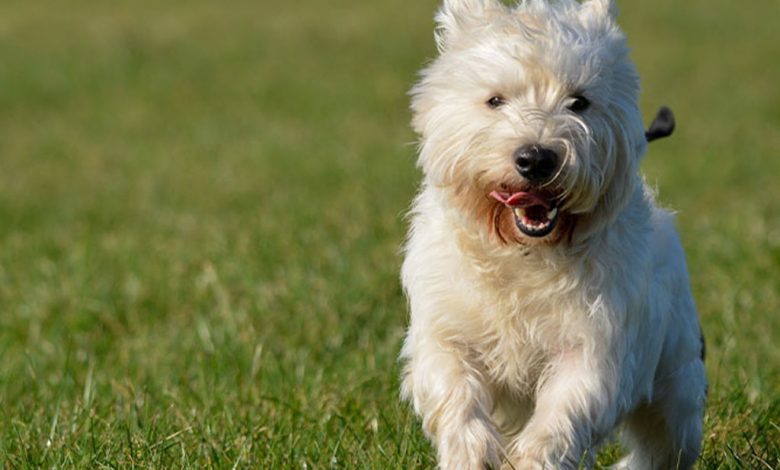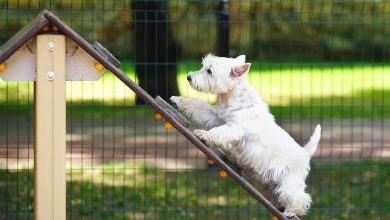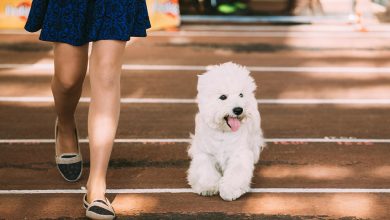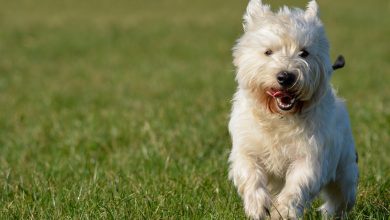Whistle While You Work
Dog trainer, Justine Shone, instructs Westie owners on how to teach recall.
For the safety of your Westie, other dogs, and people, recall is one of the most important exercises that you can teach. At no point should you let your Westie off the lead until you have mastered this exercise. Teaching your dog to respond to the whistle has several advantages. A whistle lacks emotion, and it is consistent, unlike a person’s voice. Some owners will panic or get angry when they are attempting to recall their dog. Your Westie will pick up on your emotions and will most likely not want to return to you.
The sound of the whistle carries further than your voice, especially when it is raining or windy. A whistle is transferable between handlers ensuring that your dog returns to whoever is walking them. Dogs relate to the sound of the whistle when trained properly. The sound of the whistle can be exciting as they know that something good is coming. The earlier the whistle recall is implemented the better, although this can be introduced at any age.
Dogs hear higher frequency pitches far better than the voice of a human, so they are more likely to respond to the whistle when out walking. It is essential to be fully equipped when undertaking any recall exercise. You will require a whistle, and a training pouch with high value treats such as, chicken, liver, or sausages. I would not recommend using a silent whistle because if your dog ignores you, you won’t know if they have heard you or not. With a whistle you can determine how loud you blow it and if it was loud enough. The Acme 2.10 & 1/2 whistles are ideal.
How to get started with whistle training.
You should not expect your Westie to understand what the whistle means when you use it for the first time. They need to learn that the whistle is associated with a tasty treat.
Begin in your home environment with no distractions, have the whistle around your neck and your treat pouch containing tasty rewards clipped onto your trousers for easy access to reward your dog. Do not feed your dog before starting recall exercises because you want them slightly hungry for their tasty treat rewards.
With your dog facing you, blow the whistle and then then reward your dog with a tasty treat, so that they associate the whistle with a reward.
Place the treat between your feet on the ground so that you are teaching your dog to come in close to you. Practise this exercise for at least 10 repetitions as the aim is for your dog is to learn that the whistle means that a reward is coming.
Start to walk around an area of your house e.g., the kitchen, blow the whistle when your dog starts to come to you and place the treat between your feet. When your dog is eating their treat walk to the other side of the room and repeat this exercise again. Your dog will begin to associate this as fun or a game. Repeat the exercise at least five times.
Once your dog has learnt this first step blow the whistle when your dog is in a different room, if your dog returns to you reward them with a tasty treat. This step shows that your dog is beginning to understand what the whistle means and that good things occur with this exercise. You can also blow the whistle when it is feeding time.
The next step is to take your training outside into your garden. Have your dog at opposite end of your garden, blow your whistle, and when your dog returns to you reward them with a tasty treat placed between your feet. If your dog is following you around your garden have another person hold them at the opposite end of your garden. When you blow the whistle, they can release your dog.
You can begin to use an open-handed signal, but there is no need to say anything to your dog such as, “Charlie come.” The aim is to teach your dog to return to you solely by way of the whistle. If your dog is stimulated more by toys than food, you can use a toy as a reward and play a game with your dog when they return to you.
If your dog or pup doesn’t come to you straight away, just try running backwards away from your dog or puppy because this should encourage them to come to you. Never tell your dog or puppy off for not coming back because this will only make them not want to return to you and can be very damaging for your bonding. Just stay calm and try your recall exercise again.
When your dog is consistently responding to the whistle exercise in the garden it is time to begin whistle training when you are out on a walk. Start in a place with few distractions such as a quiet area in the park. Have a long training line on your dog attached to your harness, rather than a collar so that you do not jerk their neck.
Wait until your dog is relaxed and has been to the toilet before starting the recall training. Wait for your dog to walk a short distance away from you, then blow your whistle, and when they come back to you reward them.
If your dog does not return to you immediately, try running backwards away from them because this should encourage them to come towards you. If your dog does not come back to you for any reason, stop whistling. You should not stand there whistling when your dog is ignoring you. Stay calm and retry the recall exercise later in a quieter area of the park. Never reprimand your dog for not returning to you as this could damage the bond and trust that you have already created. Gradually build up the distance between you and your dog when you are carrying out the recall exercise and remember to always reward your dog.
Clients often ask me how long it will take before they will be able to use the whistle without the reward. I tell them that your recall will begin to fail if you keep whistling without offering a reward. Over time practise recall training in places where there are more distractions. Keep your long training line attached to your dog to reinforce the recall training. If you allow your dog off the training line prematurely and if they continue to play with other dogs in the park, this is self-rewarding to your dog and your recall will deteriorate.






